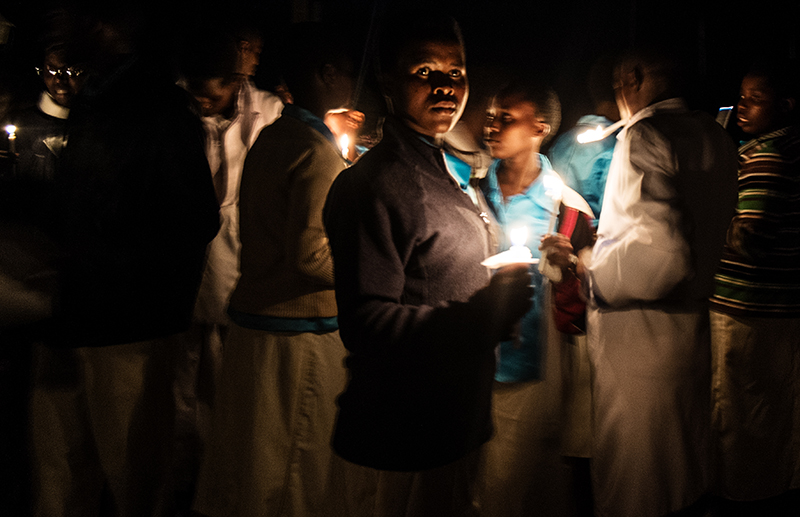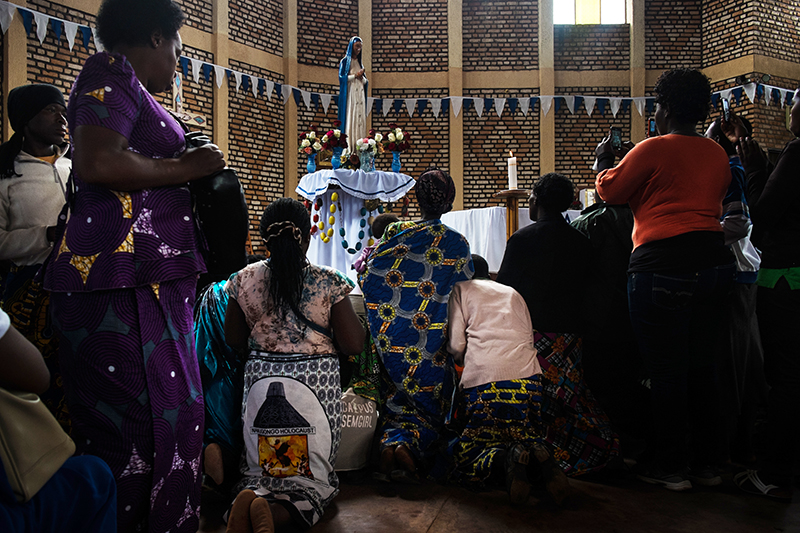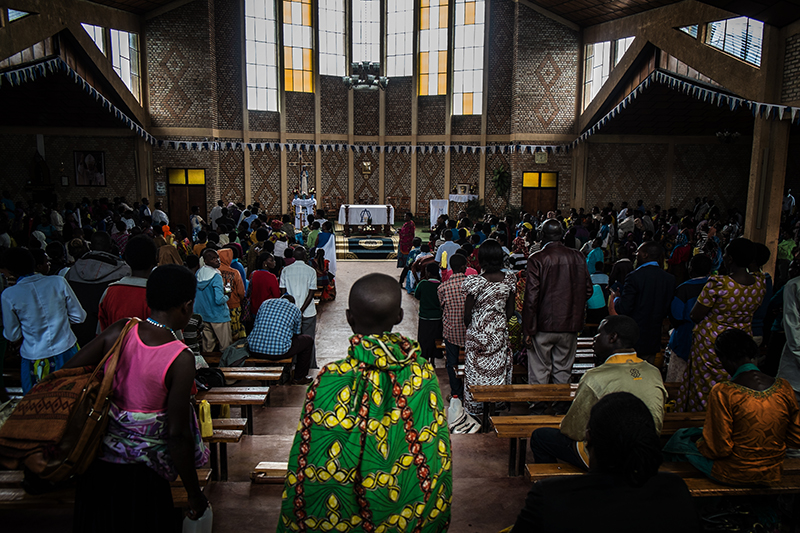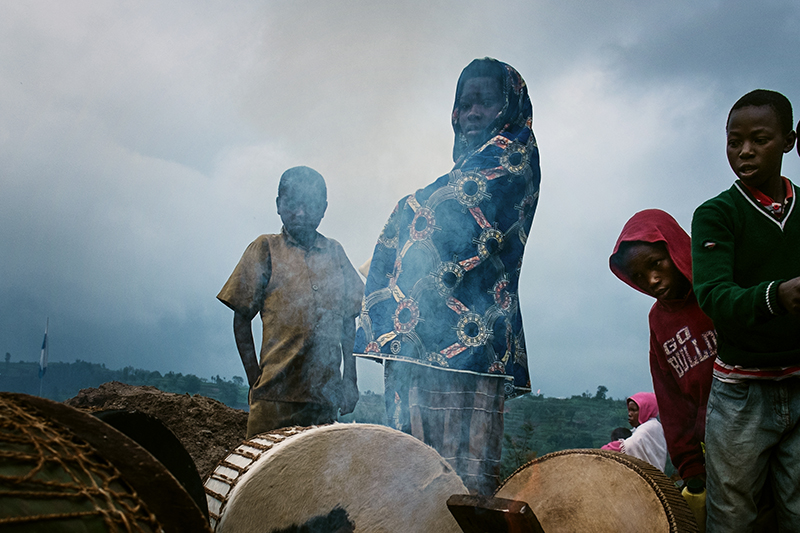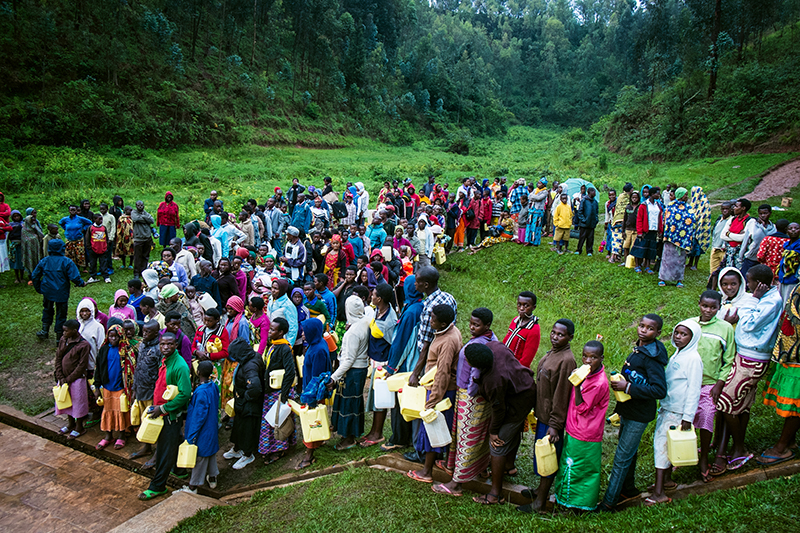Blogs
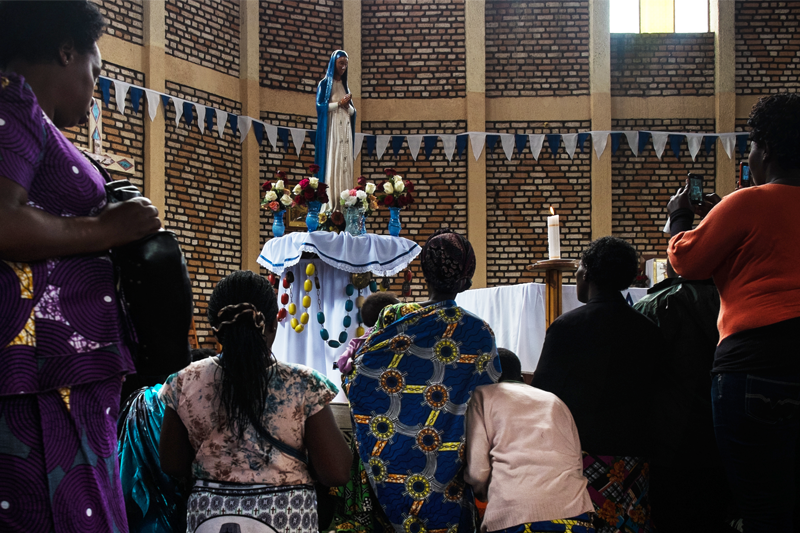
Apparition Anniversary: Kibeho
By Joan Milligan
It has been 40 years since three young women in Rwanda began experiencing visions of the Blessed Virgin Mary, who came to them with an urgent call for human repentance. Neither black nor white, she introduced herself as Nyina wa Jambo — Mother of the Word.
The Fascinating Story of Kibeho: Mary’s Prophetic Tears in Rwanda by Casimir Ruzindaza (2013) tells the story of what the women experienced: mystical journeys, gruesome visions and warnings of bloodshed. Ruzindaza, a priest, documents the events and discusses them in theological context.
The three women, students at Kibeho College, barely knew each other and were very different in temperament. Alphonsine Mumureke, 16, the first to experience private revelations, was still new to the school. She arrived weeks after classes had started and then missed more time while in the hospital.
On November 28, 1981, as students sat down to lunch, a vision of the Virgin Mary appeared to Mumureke, who sprang to her feet and opened her arms wide as if ready to embrace someone but then fell to her knees. For 15 minutes, the other students watched while she spoke to someone no one else could see. They assumed Mumureke was still suffering from whatever illness had put her in the hospital.
The initial visions that came to the next two women were wholly different. In January 1982, Anathalie Mukamazimpaka, 20, described being whisked away to a dark, flat and terrifying place where balls of fire were thrown at her, bursting and causing pain to her eyes. Her torture went on and on until a blinding light appeared. As Mukamazimpaka cried, a sorrowful voice said, “These tears are a punishment I have given you … as a warning to others.”
In March 1982, Marie Claire Mukangango, 21, who had openly mocked the claims of Mumureke and Mukamazimpaka, experienced a vision similar to Mukamazimpaka’s. Afterward, she awoke prostrate on the floor of a room that was being used as a temporary chapel devoted to the recent apparitions — a place she usually avoided. Students surrounded her, and as she regained consciousness, Mukangango said she felt deeply embarrassed to see all eyes were on her. The next day, Mary appeared to her. Humbled, Mukangango asked for forgiveness for resisting belief in her for so long.
All three women continued to have visions until 1989.
In retrospect, many believe the visions were warnings of the genocide in Rwanda in 1994 and the retaliatory killings that left approximately 1 million people dead — among them Mukangango.
Today a shrine in Kibeho is a gathering spot for pilgrims, with as many as 25,000 to 30,000 congregating on Marian feast days. Nov. 28 — the anniversary of Our Lady of Kibeho’s first apparition — is also a popular day for visitors.
Further information: Marian devotion
- Browse photographs below of pilgrims in Kibeho by Gianmarco Maraviglia.
- In the 2020 blog “Flowers for Our Lady of Kibeho,” Marian Library Archivist Kayla Harris tells of local commemorations and suggests further reading.
Further information: Rwandan genocide
- Book: We Wish to Inform You that Tomorrow We Will be Killed with our Families: Stories from Rwanda by Philip Gourevitch (1998). Awarded the National Book Critics Circle Award for Nonfiction.
- Film: Rwanda Genocide, produced by World Wide Entertainment (2011), available on campus to UD faculty, staff and students through the Libraries’ Alexander Street Video subscription. 24 minutes. Warning: Content and images are disturbing.
— Joan Milligan is the special collections cataloger for the University Libraries. Photographs by Gianmarco Maraviglia.

